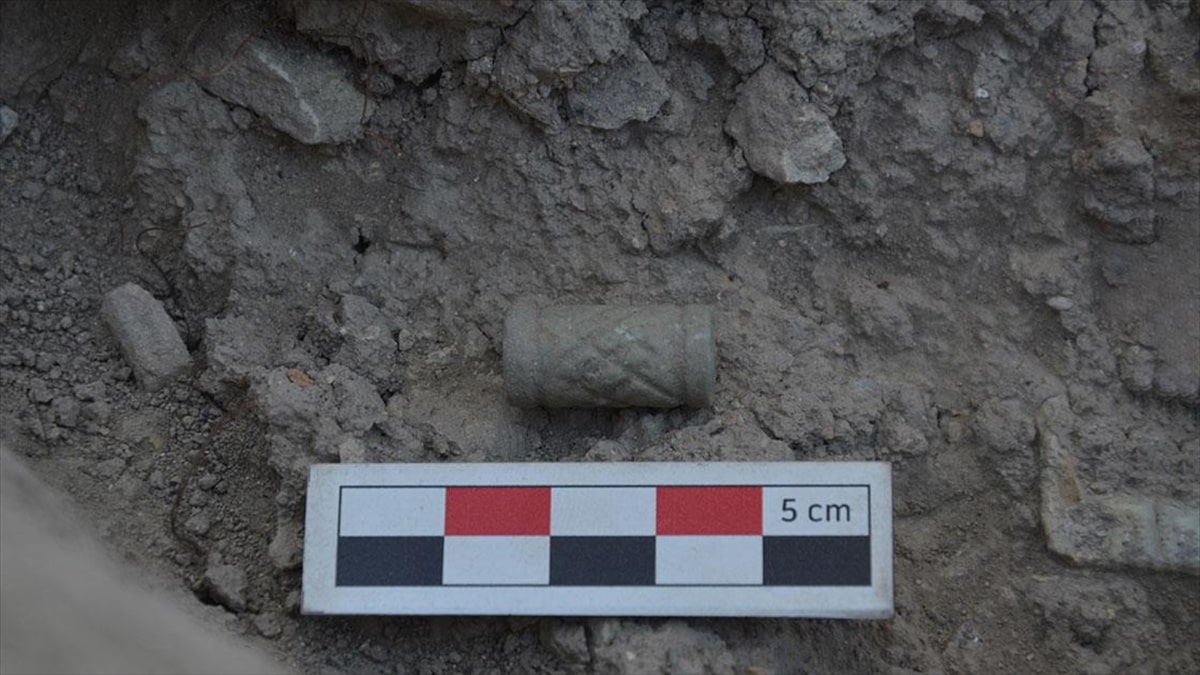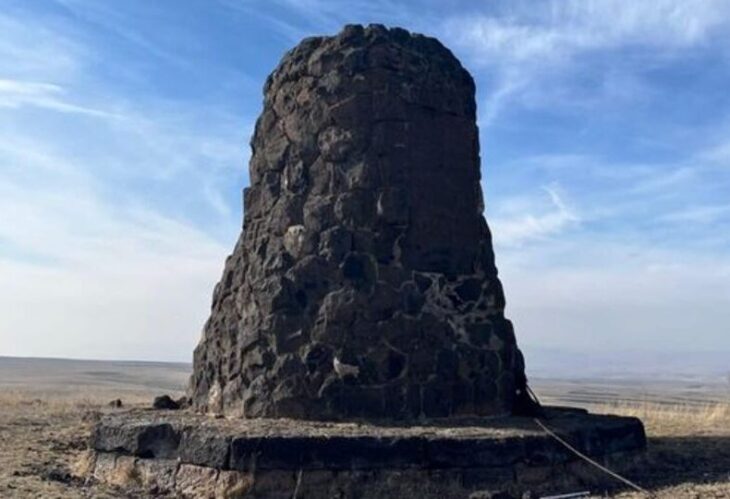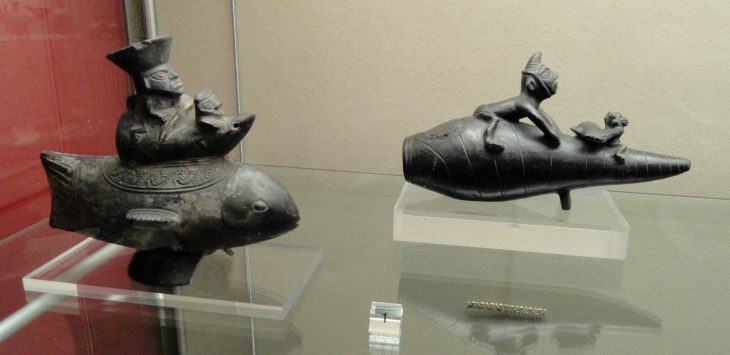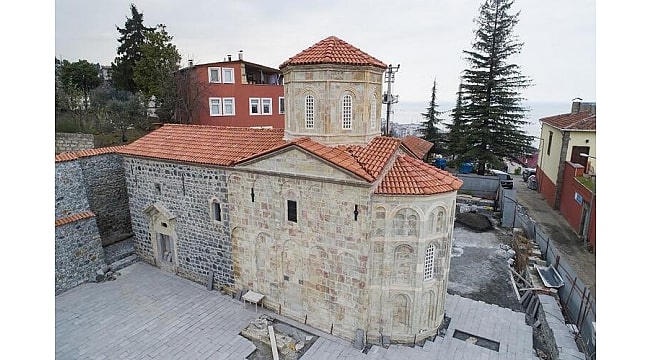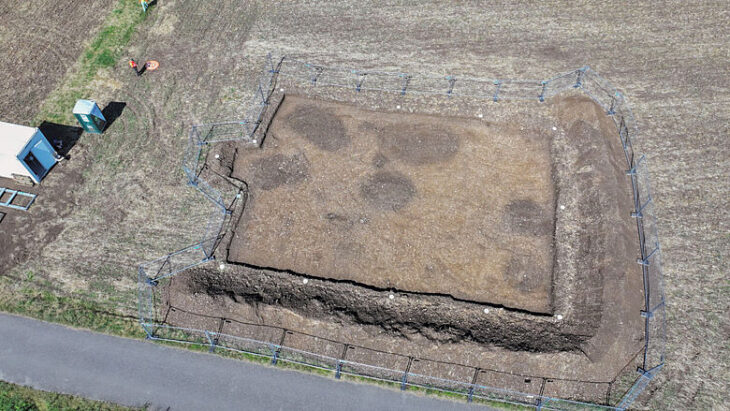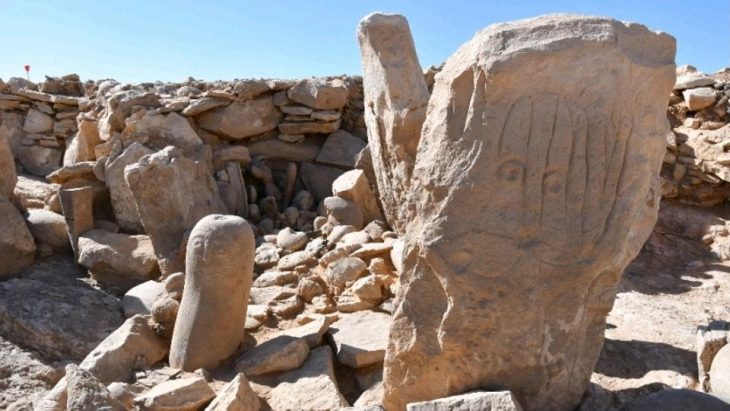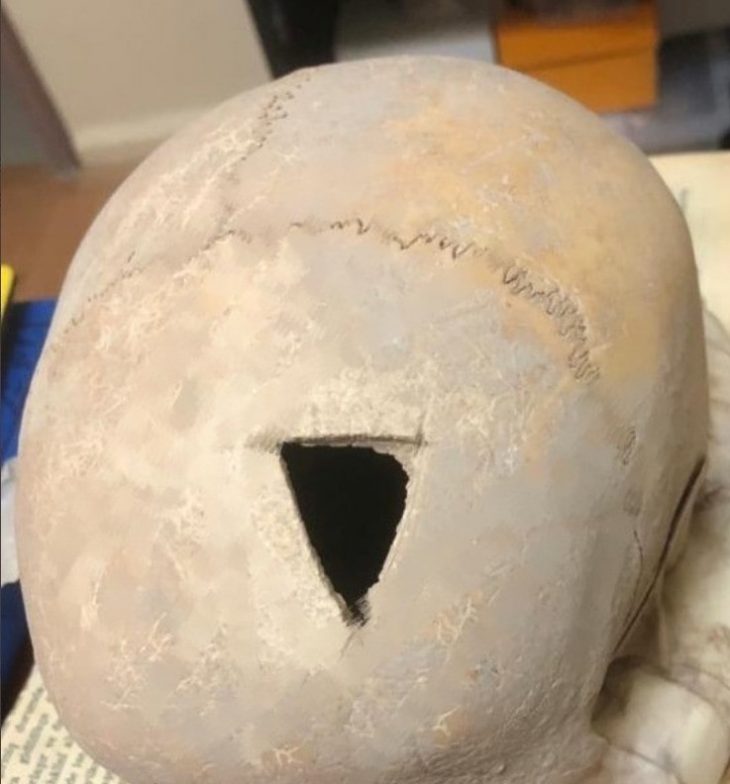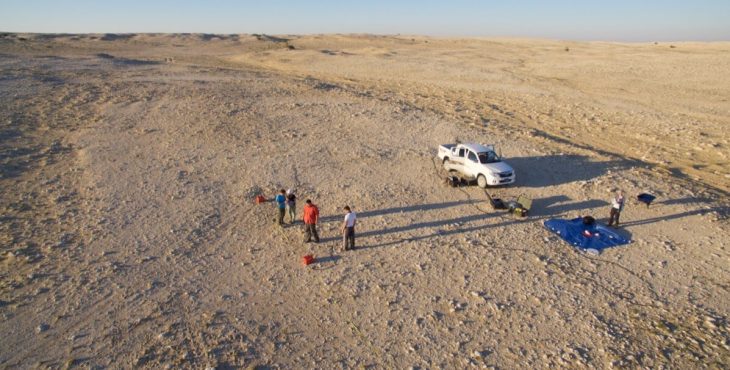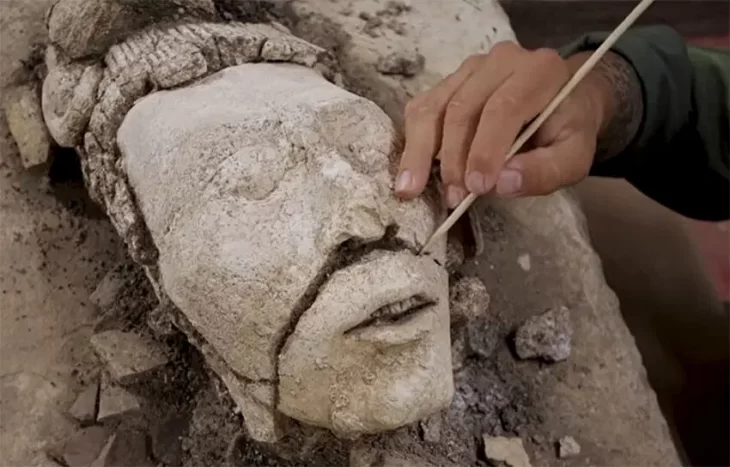A cylindrical seal made of jade stone dating back to 4,400 years ago was found in Kütahya Seyitömer Höyük (Seyitömer Mound), an Early Bronze Age – Middle Bronze Age settlement located in the western Anatolia region of Türkiye.
The archaeological site of Seyitömer Höyük is located within the Kütahya region of western Türkiye, 350 kilometers south of Istanbul, at an important juncture between the Mesopotamian and Mediterranean worlds.
The ongoing archaeological work at Seyitomer Hoyuk, located within a thermal power plant area, began 35 years ago. It is currently being conducted under Dr. Sevgi Gurdal, head archaeologist at Kutahya Museum, with sponsorship from Celikler Holding.
Since May this year, 25 specialized personnel and a group of 50 workers have been working in the area where finds related to ceramic production, especially the Early Bronze Age covering the years 3000-2000 BC, have been unearthed.
Dr. Gürdal told the AA correspondent that they are working in the Middle Bronze Age and Early Bronze Age layers at the mound.
📣 Our WhatsApp channel is now LIVE! Stay up-to-date with the latest news and updates, just click here to follow us on WhatsApp and never miss a thing!!
Stating that one of the most important finds of the 2024 excavation season at the mound was a 4,400-year-old cylinder seal found in the layer dating to the Early Bronze Age II period, Gürdal said, ‘Cylinder seals first appeared in Mesopotamia in the mid-4th millennium. Later, they spread both to Anatolia and to different parts of the world through commercial routes.’

“This cylindrical seal is particularly significant as it is the oldest of its kind found in Inner Western Anatolia,” Gurdal said.
Gürdal stated that only two cylinder seals from the same period, one made of baked clay and the other made of blue feldspar stone, were found in the ancient city of Troy in Çanakkale last summer in Western Anatolia.
Detailed analysis revealed that the seal is made of jade, a material rare in Türkiye. Although the jade found in Türkiye is normally purple, it is rarely found in green color, Harmancik, a region between Bursa and Kutahya.
Explaining that the seal shows that there is international trade and cultural interaction in the region, Gürdal said, ” It is an extremely important find in terms of showing that it was made under the influence of different external cultures and that it was produced with a type of stone in the region.’
The seal, discovered within a wall of an architectural structure, features a circular perforation and a decorated surface with a cage motif enclosed by circular borders.
Cover Image Credit: AA

